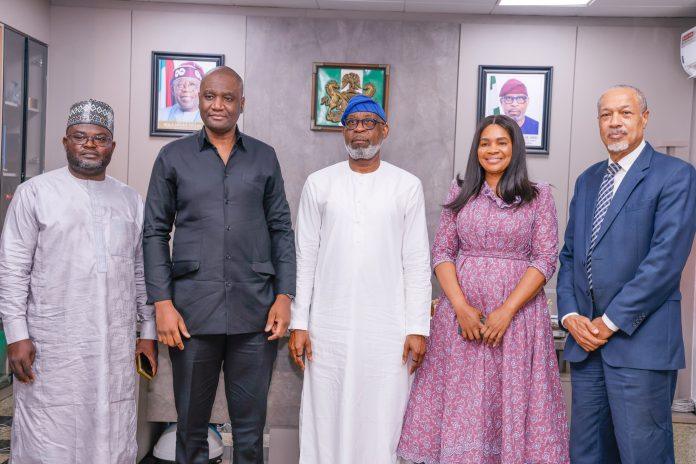It seems strange to buy something without using it, but people do it all the time. Some buy gym memberships, planning on changing their lives, but never get around to using them. Companies too make purchases believing that the purchase itself is enough to make a change at the firm. When licensing external knowledge, for example, management might believe that once the knowledge has been acquired, it is being used efficiently. But, like that unused gym card, buying outside knowledge on its own doesn’t mean that it is put to the best use. It needs to be integrated into the firm for the best result.
Licensing external knowledge to create new products
Licensing outside knowledge is now a factor in the way that we innovate. More and more firms are moving from doing everything themselves to bringing in ideas from the outside through purchasing wholesale packages of knowledge. Two different licensing options are common – either standard licences, in which knowledge is bought without further engagement from the data/knowledge creator, or partnership/embedded licences, which establish a relationship with the provider.
In a recent article in Research Policy, “Standard vs. partnership-embedded licensing: Attention and the relationship between licensing and product innovations”, my co-authors, Thomas Klueter and Denise Dunlap, and I looked at the two ways innovative companies successfully use external knowledge. Companies can either engage in a partnership-type of licence, investing in cross-company teams, or they can purchase a standard licence for external knowledge. And the success of bringing in and using this knowledge effectively depends on the attention it gets from management.
We know that partnership licences, often more expensive and definitely more time consuming, have an important impact on innovation. What we were surprised to find in our study is that even standard licences may inspire the same level of innovation, as long as managers give their attention to the project at hand.
A conscious choice
We often think about innovation as lightbulb moments or something done entirely by R&D teams, discounting leadership. But leaders, and the attention they bestow, can have an important impact on revolutionary products or ideas. One example of an out-of-this-world innovation was the race to the moon: NASA credits the vision of John F. Kennedy as a motivator in its work. Kennedy didn’t direct the project himself, but he spoke about it, giving it attention which then focused the rank and file to reach for the moon.
Leaders, and the way they direct their attention, impact innovation. Yet one of the scarcest resources in an organisation is attention. CEOs and directors have overfull agendas and heavy priority lists. Of course, they can’t pay attention to everything; they need to make conscious choices about how to direct their focus. Attention from the top affects all activities in a firm – from responses to innovation, to the different technologies they choose to pay attention to. In my previous research, I have examined the way headquarters allocate attention; specifically, the way their focus impacts isolated subsidiaries or how companies tend not to pay attention to external ideas that challenge their existing dominant logic.
Attention influences the extent to which outside information will be transformed into product innovation. Our study found this to be true for radical innovation, such as fundamentally novel drugs targeting a cure for cancer, not incremental modifications to a product.
Two types of attention
When it comes to creating innovative products, attention has multiple aspects. We looked at two types of attention: top-down (the top ranks) and bottom-up (e.g. scientists in a R&D lab).
For our study, we selected the top 50 global bio-pharmaceutical companies in 1997, and then traced their licensing agreements from 1997 to 2006.
We measured bottom-up attention based on R&D units’ patenting focus. If they had patents spread out over many therapeutic areas, we recorded their attention as low; those R&D units that concentrated on a few therapeutic areas were deemed able to give more attention to their particular projects.
Bottom-up attention concerns trying to identify and measure other tasks a team is being asked to do. When people work on too many projects, there is a tremendous amount of competition for their attention, making them less likely to pay attention to external knowledge.
Top-down attention was harder to calculate. We searched the most comprehensive news sources (e.g. Factiva) for press announcements, then news articles related to the licensing agreements we initially found. We controlled for many factors: key characteristics of the licensing deal, late stage of the innovation, the size of the deal, complexity and many others.
Attention by perspective
Attention from top management doesn’t have to be the CEO directly assigning a task or participating in meetings. It’s an acknowledgment from the top that a particular project is important. The mere fact that top management is paying attention is enough.
We found management attention, both bottom-up and top-down, important when bringing in external knowledge with a standard licence in order to impact a truly innovative project. Having this attention increases the likelihood of a standard licence leading to a radical innovation because the outside knowledge is more likely to be used.
Top management has a sizable role because not only do they influence their organisation, but they also affect assignment workloads, or the direction of their R&D teams. Managers know that if they assign too many projects or if the company is working with too many different technological areas, R&D teams are less likely to benefit from the external knowledge they bring in.
The worst-case scenario is when an organisation purchases an external knowledge licence for an area that’s already overloaded, and with a top management team that doesn’t pay attention to it. In this scenario, external knowledge is very likely to fall through the cracks.
The best-case scenario is when top management is already paying attention to the licensed knowledge and the R&D team receiving it is focused and not overextended. When a company is looking for a major innovation, management must recognise its own importance.
Knowledge is just the beginning
Remember that our findings have to do with radical innovations, not improvements in an app or tweaks to existing products. The CEO doesn’t have to drive a marketing campaign about an innovative project to have an impact. It may suffice for top-level managers to mention the project in a company meeting. Since attention is a scarce resource, when the top brass expresses an interest in a project, people in the organisation do notice.
When a company buys outside knowledge, it’s vital for managers not to fall into the trap of believing that that purchase is a completed event. Buying knowledge off-the-shelf does not necessarily make for innovation. Managers must continue to pay attention to what happens next if their company is to create something completely different. Attention is a key ingredient of innovation.
Felipe Monteiro is an Affiliate Professor of Strategy at INSEAD









